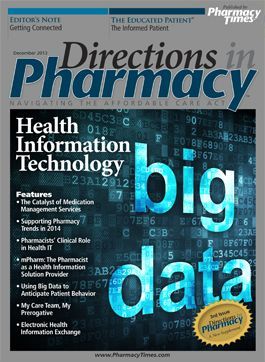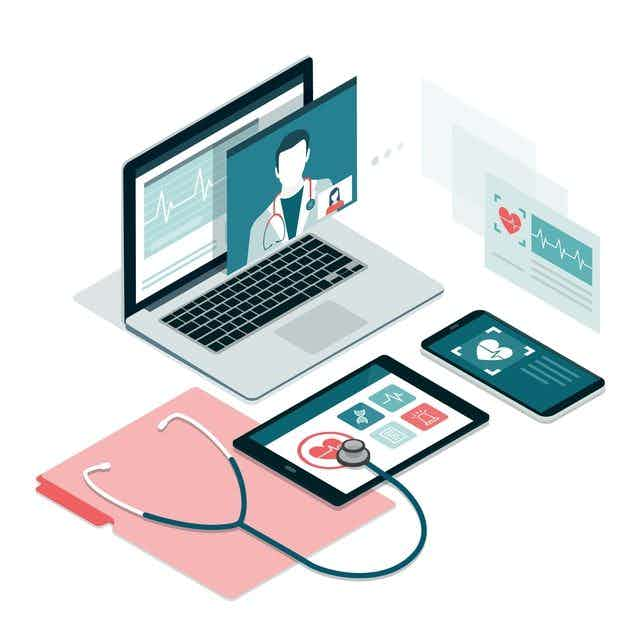Publication
Article
Pharmacy Practice in Focus: Oncology
Minority Report: Using Big Data to Anticipate Patient Behavior
Author(s):
By leveraging analysis of "Big Data," pharmacies can extend their ability to serve a key role in primary care.

By leveraging analysis of “Big Data,” pharmacies can extend their ability to serve a key role in primary care.
Upcoming changes in the health care delivery system will create many opportunities for pharmacies. For starters, as many as 20 million or more people will enter the US health care system under reform.
A significant percentage of these individuals have previously untreated comorbid conditions, which will likely drive prescription volume higher. However, pharmacies must elevate their capacity to accommodate these new lives or risk losing out to competitors.
As the industry moves toward patient-centered collaborative care models, most notably achieved via accountable care organizations (ACOs) that take on the financial risks involved with caring for Medicare and other patients, pharmacies have the opportunity to become a more essential member of an integrated delivery system. Unfortunately, however, most discussions around collaborative care leave pharmacies out of the equation, perhaps because the current delivery system has over-marginalized their role. Many would argue that pharmacies can play an important part in the ACO environment, focusing on medication therapy management (MTM) or medication synchronization as well as data and information integration into both the pharmacy and provider workflows.
Challenges
Often called “Big Data,” there is little question that massive sets of clinical information can offer pharmacies big value, but organizations must first overcome some formidable challenges. For one, much of the data are locked away in silos—proprietary systems that don’t easily integrate and communicate with one another. Further, data collection under the current models is generally untimely when delivered and analytics to date have been too slow and lacking in the necessary intelligence to drive even simple clinical and financial decisions by the pharmacy. Finding a partner experienced in this sort of information exchange with analytics capabilities is a first step.
And where does that leave pharmacists? Perfectly positioned to use their wide geographic footprint and accessibility to become an extension of the primary care team, communicating with patients to promote wellness and respond to basic medical needs. And as pharmacists increasingly interact with patients, they can leverage big data to have a material impact on cost savings and quality improvement through many activities, including:
- providing risk assessments
- identifying gaps in care and notifying systems when gaps have been closed
- determining the appropriateness of prescribing decisions
- supplying MTM services
- reducing readmissions with strategic interventions
- conducting specialty drug management
Process Improvements
Just as importantly, the health care community can be monitored to assure that the key risks and contributors that drive unwanted outcomes, such as the risk of hospital readmission, are being monitored proactively. For example, did the patient pick up their medications or see their primary care physician for follow-up care as directed? Many of these factors influence preventable readmission and can be managed efficiently with care coordination.
Combined with a care coordination application and a delivery network within the pharmacy work flow, pharmacists have the ability to receive gaps-in-care alerts, medication and care plan adherence notifications, and real-time quality dashboards that will help improve clinical quality and lower costs. Leveraging these analytics-infused Big Data, pharmacies can track important diagnostic metrics and integrate delegated care models for chronic care management.
The ability to leverage Big Data to drive process improvements, including using the information to help structure performance initiatives, and ultimately to influence behaviors, is vital in the new health care economy. With integrated analytical data and actionable information, decision makers will be better equipped to make positive changes to clinical practices, operations, contracting strategies, and patient relations, among other activities.
Analytics create a platform that allows health care stakeholders of all types to share greater amounts of clinical and financial information with a diverse group, allowing them to collaborate on medical decisions that will ultimately help shape patient behaviors and create healthier communities.
Gene Boerger is the vice president of product innovation for Emdeon, a leading provider of revenue and payment cycle management and clinical information exchange solutions in the US health care system.











